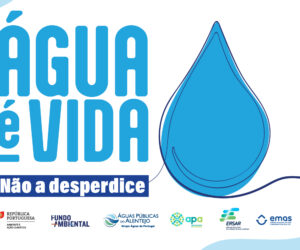Was released on the day 16 April or "Study on alcohol consumption behaviors, Snuff, Drugs and other additive behaviors and dependencies – Portugal 2024 (ECATD-CAD)", that results from validation 11.083 questionnaires filled by students of 1.992 Public Education Schools located in all regions of mainland Portugal and the Autonomous Regions of the Azores and Madeira.
Colonel of the GNR, Master in Law and Security and Homeland Security Auditor
Director of the National Association of Guard Officers
The study Ecatd-CAD is the broadest radiography of the consumption of additive substances and behaviors among school-age young people in Portugal, being held every four years, presenting the report of 2024 the data collected through the application of the European questionnaire Espad (European School Survey Project on Alcohol and Other Drugs), covering a representative sample of 11.083 Public Education Students, aged 13 and 18 year old, in the various regions of the country, marking this edition the first online application of the inquiry, maintaining the national and regional representativeness of the results.
On the consumption of psychoactive substances, namely alcohol, Tobacco and Drugs, It is concluded that alcohol remains the most consumed substance, with 58% respondents to report consumption throughout life and 30% we 30 days prior to inquiry, and although illegal for minors 18 year old, Early intake is common, with 30% to refer to the beginning before the 13 year old, where the pattern of binge drinking (Ingestion of five or more drinks on one occasion), It was reported by 17% in the last month, while severe drunkenness reached 6% of the students in that same period.
In the case of tobacco, 25% of the students experienced smoking, with 10% to report recent consumption, where for the first time, the experimentation of electronic cigarettes (18%) It was equated with combustion tobacco, although the latter is still predominant among the elders, Having the prevalence of daily consumption if it remained low (next to 2%), but relevant among regular consumers.
Illicit drugs have less prevalence: 7% have already experienced some substance, with 6% to report consumption in the last year and 3% in the last month, continuing cannabis to be the most consumed illicit substance, being the use of other drugs practically residual, however, among current cannabis consumers, next to 10% have daily or almost daily consumption patterns.
Regarding medicines and games, These are the new focuses of attention, the consumption of medicines with psychoactive effect also appears in the radar: 8% of the students took tranquilizers or sedatives with prescription, while 5% did it without revenue and the use of nootropics (cognitive stimulants) and strong painkillers without medical supervision, although less prevalent, deserves attention for duplicating since the last study in 2019.
In the field of additive behaviors without substance, The money game presents expressive growth, reaching 18% of respondents, whose intensive video game practice, Especially on days without school, It is also high, with 30% students playing four or more hours a day.
Already in trends and analysis by sex and age, The study shows a global trend of decrease in the consumption of psychoactive substances since 2019, particularly in alcohol and traditional tobacco, there is also an inversion in the prevalence of alcohol consumption between the sexes, with girls now presenting higher consumption rates and risk behaviors, namely drunkenness and binge drinking.
It is verified that age is a decisive factor: The older the students, greater the prevalence of consumption, as an example, recent alcohol consumption, which increases from 24% to 13 years to 79% to 18, This is also the tendency for tobacco and cannabis.
In the perception of accessibility and early start, It is verified that perceived accessibility continues to influence consumption, more than half of students find it easy to get alcohol, especially beer (56%), and 38% They say the same about tobacco, where cannabis is seen as accessible by 17%, far above other illicit drugs.
The early beginning of the consumption is worrying: almost half of alcohol consumers started before the 13 year old, repeating this pattern for tobacco and, on a smaller, for Cannabis and the binge drinking.
It is concluded that Ecatd-Cad 2024 draw an ambivalent portrait: although the global consumption of substances is decreasing, some risk behaviors remain present among a significant minority, where the precocity of consumption, the rise of new products such as electronic cigarettes, Increasing money game and drug consumption without medical supervision are emerging challenges, underlining the study the continuous need for informed public policies, prevention and education actions directed especially to young people, as well as intersectoral strategies that integrate health, Education and Justice.
Note: The text constitutes the exclusive and unique opinion of its author, which only binds to this and do not reflect the opinion or position of the institution where it provides services.

























